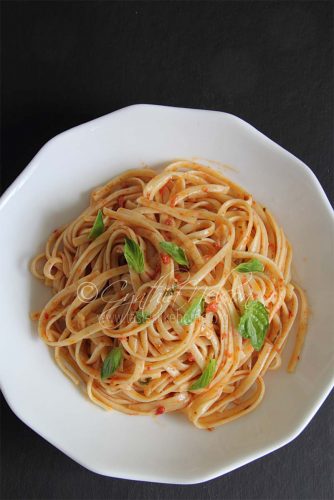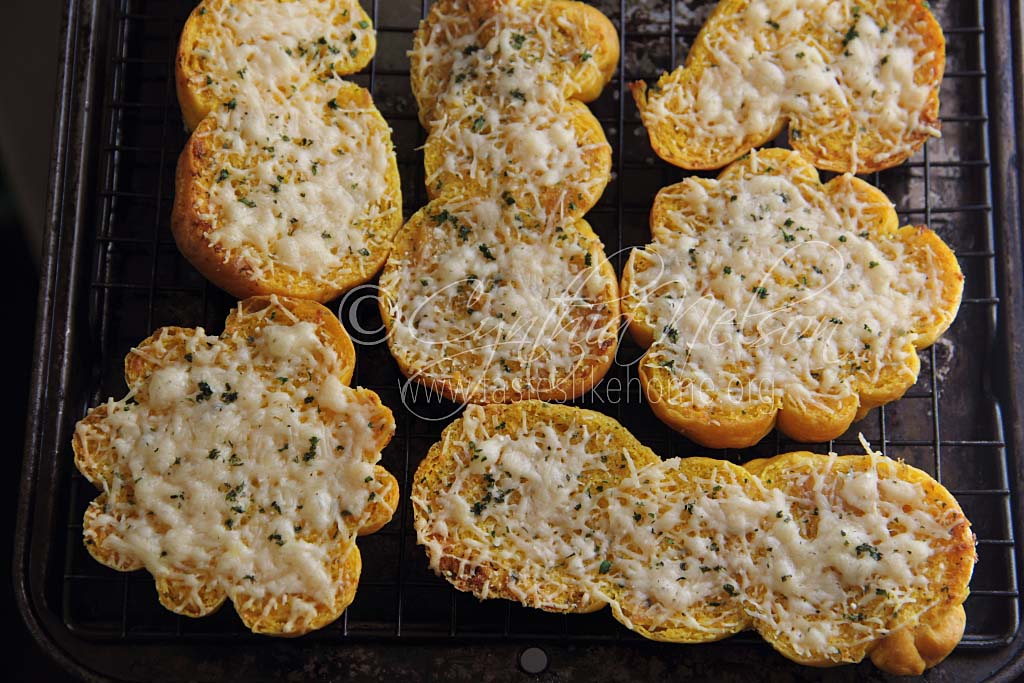 Last week I mentioned that I prep and store certain things for convenience and the cutting down on prep time to cook (especially when in a rush). I have received lots of emails and direct messages asking to share some of the things I make and do. Most of the things I will list today, I have told you about before, and you may recall, if you have been reading that long, this month marks the beginning of the 16th year of this column. However, for the new(er) readers and as a refresher, I thought that I would list several for you in a column.
Last week I mentioned that I prep and store certain things for convenience and the cutting down on prep time to cook (especially when in a rush). I have received lots of emails and direct messages asking to share some of the things I make and do. Most of the things I will list today, I have told you about before, and you may recall, if you have been reading that long, this month marks the beginning of the 16th year of this column. However, for the new(er) readers and as a refresher, I thought that I would list several for you in a column.
Before I list the things, let me tell you that I invest in a variety of storage containers, bottles and jars – mostly glass and some plastic, all with airtight lids – in a variety of sizes. Freezer bags in various sizes are a must for me too.
Apart from the fire-roasted eggplant and de-salted salt fish and smoked fish, here are some things that I prep and store.

(Photo by Cynthia Nelson)
Tomatoes – When tomatoes are in season, I roast them directly over the fire for that smoky flavour and also in the oven with fresh herbs like thyme, rosemary, tarragon, or marjoram. Sometimes, I would add a head or two of garlic.
To store: Once cooked, the tomatoes are skinned, and the flesh and juices (from oven roasting) are stored in glass jars and refrigerated. Fire roasted tomatoes are skinned, transferred to glass jars, topped with heated oil and cooled before being refrigerated.
When not roasted, the tomatoes are chopped, sautéed with sliced garlic and fresh basil, turning the lot into Marinara, an Italian-style tomato sauce that can be used for many things, including a dip.
Speaking of Basil, if you know of the growing of this most aromatic of herbs, you will know that not only is it easy to grow but it does so in abundance and you always, always have more than you need for use at one time. It is always plentiful at the markets too. Simply blanching the herb and pureeing it with salt and oil gives you a spread and sauce that you can even use as a marinade. To make it fancy, add some garlic and nuts and you have pesto for many uses, not the least of which is to toss with pasta. I’d encourage you to steam cook rice and mix pesto into the rice – it is so good that you can eat it on its own. Smear the pureed basil (regardless of how you’ve made it) on your sandwich, grilled seafood, and vegetables, whether steamed, roasted, or grilled.
To store: Place in a glass bottle; there should be enough oil from the puree to cover the sauce, if not drizzle a film of oil to cover the surface. Refrigerate.
Cassava – This is one of my favourites because it means that I can make bakes, bread, rolls, dumplings, or pone whenever I want. Mostly the pone (lol). No more grating! I peel and chop the cassava and put in a blender with as little water as possible and puree it. This is best done in batches. Do not use a food processor as it will finely chop rather than puree the cassava.
To store: The pureed cassava, in 2-cup capacity, is placed in zip seal freezer bags. To use, simply rest the bag(s) on a plate and let it come up to room temperature.
Coconuts – I buy no fewer than 3 coconuts at a time and grate them all at the same time. This is an ingredient that is always in my freezer; it is a must have. With the coconut grated, I can quickly make coconut milk or use the coconut itself to make a variety of savoury and sweet dishes, and treats.
To store: Add grated coconut in 2-cup or 1-cup capacity to zip bags, remove excess air, flatten, seal and freeze. Flattening takes up less space in the freezer.
Ginger-Garlic Paste – This is a blend, a puree, of equal parts fresh root ginger and garlic made in a jug blender. This combination I use as the base of many curries, sometimes stews and for many Asian dishes. It is excellent in marinades. I especially like it mixed with green seasoning, soy sauce and oyster sauce to make baked chicken. I also use it as a base with chopped onions, fresh herbs, and hot peppers to sauté vegetables.
To store: Put pureed ginger-garlic paste into ice-cube trays, freeze then remove and store in a zip freezer bag in the freezer.
Garlic – Roasting several heads of this pungent allium, makes it creamy, soft, and sweet. Roasted garlic packs a load of flavour to whatever it is added. It is a perfect addition to spreads, dips, vinaigrettes, and dressings. Roasted garlic is also perfect as an emulsifier for many sauces (and dressings).
To store: Add garlic to a glass jar and cover with heated oil or oil in which the garlic was roasted/confited and then refrigerate it.
Ginger-Scallion Oil – This is one of my all-time favourite things to always have on hand. Grated ginger, thinly sliced scallions/green onions, finely minced hot pepper, and oil are the only ingredients for this simple, versatile, uber-flavourful sauce. It brings a lot to everything to which it is added. There’s no cooking involved. Simply grate the ginger or mince it finely, thinly slice/chop the scallions (white/purple and green parts) as well as the hot peppers (which are optional, they are my addition). Mix everything together with salt to taste and season. Heat twice the volume of oil of the ingredients until smoking hot and pour the hot oil over the aromatics, stir well to mix, and let rest for 20 minutes to infuse. If not using right away, let cool to room temperature and store in an airtight glass bottle. I make a large batch of this, about 2 cups worth. If you like, before adding the hot oil, you can mix in a little regular soy sauce. To finish the sauce you can also add a couple drops of toasted sesame oil. Fragrant and flavourful.
I toss chowmein noodles with the ginger-scallion sauce as well as pasta, and often, I stir it into hot steam-cooked rice. There are times when I’d simply boil ground provisions like cassava, sweet potatoes, yam, or breadfruit, slice them while hot and dress them with ginger-scallion oil by simply spooning the oil over the provisions. I also like to steam firm ripe plantains in their skins, peel, slice them hot and dress with ginger-scallion oil. The play on sweet and savoury is delicious.
Here are some other ways to use the ginger-scallion oil:
* Over sliced boiled eggs
* Over steamed seafood or steamed chicken
* As the dressing for a warm potato salad
* Mixed into a vinaigrette, salad dressing or a dip for a different flavour
* Mixed into mashed potatoes or mashed ground provisions
To store: Place the ginger-scallion oil in a glass jar with a tight lid and refrigerate.
As with everything that you make and store that you will be accessing, be sure to use clean, dry utensils and keep lids tight.
Cynthia
cynthia@tasteslikehome.org










